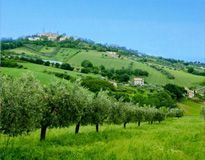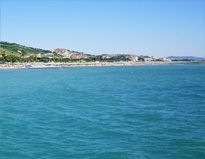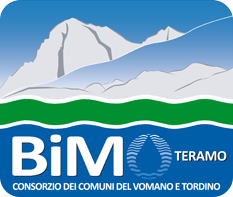To report any additions, changes and/or corrections click on "Submit a content"
It is located in Giulianova Paese at the intersection between Via Diaz and Via San Francesco and was built in 1566 on a pre-existing Romanesque church. Initially the church was annexed to the convent of the Friars Minor Conventuals, which however, with the provision of Compiègne of April 25, 1810 which ordered the abolition of religious orders, was suppressed and transferred to State Property and in 1814 became the seat of the Gendarmerie, prisons and after the municipal offices. In 1930 the bell tower was added to the church, while in the second post-war period it was completely looted and left in a state of neglect for decades. Since 1982, however, on the precise intention of the then parish priest, Fr Domenico Panetta, the renovation and restoration work began, which led to its reopening on 25 November 1984. Today it presents a simple brick façade on which an austere portal opens. Stone. On the left there is a bell gable that houses three bells, the smallest of which is located above the other two. Inside there is a single nave that ends with the apse in which is located the presbytery area that houses a carved wooden altar dedicated to Jesus Crucified at the back of which the choir is placed.
On the side walls you can admire other four altars in Baroque style dedicated to the Sacred Heart of Jesus, St. Anthony of Padua, the Madonna and St. Joseph, as well as ten large bas-reliefs depicting scenes inspired by the Gospels and two paintings by Giacomo Farelli (1629) -1706). Then, at the sides of the main altar, there are two large statues, probably of San Bernardino da Siena and San Bonaventura. Also worthy of note is the pipe organ made in 1737 by the organ builder Onofrio Cacciapuoti di Vasto, placed in the choir built above the entrance portal.
A sinistra si erge un campanile a vela che ospita tre campane, la più piccola delle quali è posta sopra le altre due. Internamente c’è un’unica navata che termina con l’abside in cui è situata la zona presbiteriale che accoglie un altare ligneo intagliato dedicato a Gesù Crocifisso alle cui spalle è sistemato il coro. Sulle pareti laterali si possono ammirare altri quattro altari in stile barocco dedicati al Sacro Cuore di Gesù, a Sant’Antonio da Padova, alla Madonna e a San Giuseppe, oltre a dieci grandi bassorilievi riguardanti scene ispirate ai Vangeli e a due dipinti di Giacomo Farelli (1629-1706).
Ci sono, poi, ai lati dell’altare maggiore, due grandi statue probabilmente di San Bernardino da Siena e di San Bonaventura. Degno di nota è anche l’organo a canne fabbricato nel 1737 dal maestro organaro Onofrio Cacciapuoti di Vasto, collocato nella cantoria realizzata sopra al portale d’ingresso.
 en
en 













